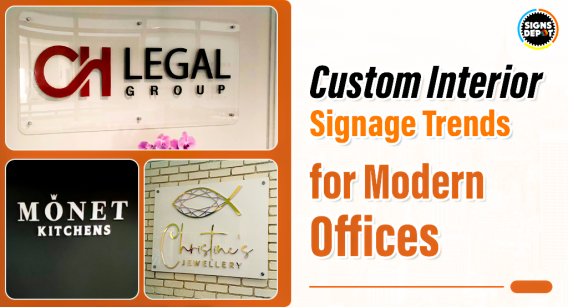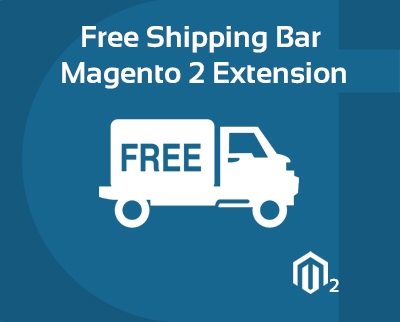Designing for Multiple Platforms: How to Adapt Your Branding for Print, Web, and Mobile
In today's digital age, it is essential for businesses to leverage multiple media platforms and devices to reach a larger audience. Strong brands have recognized the importance of expanding across different media platforms, including tablets and mobile phones, to underpin international growth and maintain relevance in an ever-changing market. As advertising revenues change, an increasing number of print publications are redefining themselves as multi-platform companies to keep up with the times. In this context, designing for multiple platforms has become increasingly crucial to ensuring brand consistency and effectiveness across different media. Businesses must recognize the importance of designing for multiple platforms, so they can adapt to the rapidly changing digital scenarios while marketing.
In this blog, we will explore the significance of designing for multiple platforms and delve into understanding the variations between platforms. We will examine successful examples of multi-platform branding and discuss the importance of adapting branding for each specific platform, including print, web, and mobile. Additionally, we will gain insights into the disparities in design requirements between print, web, and mobile, and the importance of maintaining consistency across platforms. We will also address the challenges that arise when adapting branding for print, web, and mobile and offer key strategies to achieve successful multi-platform branding.
Importance of designing for multiple platforms
In today's world, companies need to have a consistent brand image across all platforms to establish a strong brand identity and foster long-term customer loyalty. This requires designing and adapting branding for multiple platforms, such as print, web, and mobile, which can pose several challenges.
Designing for multiple platforms is important for several reasons
User experience: Users expect a consistent experience across different devices and platforms. Designing for multiple platforms ensures that users can easily navigate and use your product, regardless of the device they are using.
Reach: Designing for multiple platforms allows you to reach a wider audience. By making your product available on multiple platforms, you can attract users who prefer one platform over another.
Flexibility: Designing for multiple platforms gives you the flexibility to adapt to changes in technology and user behavior. As new devices and platforms emerge, you can adjust your design to meet the needs of your users.
Competitive advantage: By designing for multiple platforms, you can gain a competitive advantage over other products that are only available on a single platform.
Understanding the Differences Between Platforms
Successful multi-platform branding requires an understanding of the unique characteristics of each platform and their design considerations. Brands that master this art can create powerful messaging and establish a strong visual identity across all platforms.
Unique characteristics of print, web, and mobile platforms
Print, web, and mobile platforms all possess unique characteristics that need to be considered when designing for them. Print is a tangible medium that uses high-resolution graphics to present information, while web and mobile platforms rely on screen-based displays. Web platforms are often viewed on larger screens and are interactive, while mobile platforms target a smaller screen size, leading to simplified and streamlined designs.
Design considerations that must be considered for each platform
When designing for each platform, certain design considerations must be considered. For print, elements such as paper quality, font choice, and branding guidelines play a crucial role in the final design. For web design, elements such as website navigation, content organization, and responsiveness must be considered. In contrast, mobile design places emphasis on minimalism, readability, and ease of navigation.
Examples of successful multi-platform branding
Several brands have successfully adapted their branding across multiple platforms. Coca-Cola, for example, has a bright red color and a unique font style that is recognizable worldwide in their print advertising campaigns. Their branding is equally effective on their website, where the red color is used to create clear spaces for key messaging and the typography is designed to be easily read. On mobile, Coca-Cola utilizes the same clean design aesthetic, with an emphasis on easy navigation and quick load times.
Another example of successful multi-platform branding is Nike. They use simple, bold designs that work well across all platforms. Their print advertising uses bold typography and a minimalist design, while web design focuses on sleek imagery and dynamic movement. On mobile, Nike's design is optimized for quick loading times, easy navigation, and simplified layouts.
Adapting Branding for Each Platform
Adapting branding to suit the unique characteristics of each platform is essential for creating an effective and successful multi-platform branding strategy. One strategy is to keep the design simple, with strong visual elements that can be easily recognizable on different devices and platforms. This includes using a simple color palette, typography, and logo design.
Strategies for adapting branding to suit the unique characteristics of each platform
Another strategy is to create a responsive design that adapts to different screen sizes and devices. This can include optimizing images for different resolutions, using scalable fonts, and designing intuitive navigation menus. Additionally, understanding how users interact with different platforms is essential for creating a design that resonates with the intended audience. Adapting branding for each platform requires an understanding of the unique characteristics of each platform and the design considerations that must be considered.
Print design considerations include the hierarchy of information, typography, color, and layout, which must be adjusted for each medium. For web design, considerations must include the use of whitespace, typography, responsive design, loading time, and user browsing behavior. In contrast, mobile design places an emphasis on concise messaging, as the smaller screen size requires streamlined visuals and information. Additionally, designing for mobile requires taking into consideration the hardware and software limitations of the device.
Overall, adapting branding for each platform is essential for creating an effective multi-platform branding strategy. By understanding the unique characteristics of each platform and designing for the specific needs of the audience, brands can establish a strong visual identity across all mediums.
Adapting Branding for Print
Importance of typography and color choices for print branding
Typography and color choices play a crucial role in creating effective print materials. Typography is essential in ensuring the readability and legibility of the information presented in print materials. Choosing the right font size, line spacing, and style can make a big difference in the final design. Similarly, using appropriate color schemes can make the printed material stand out and be more memorable. Color choices should reflect the brand's identity and be consistent across all materials to establish a strong brand image.
Need for high-resolution images and graphics in print materials
Print materials rely on high-resolution images and graphics to ensure quality and sharpness in the final printed product. Low-resolution images may result in pixelated or blurry prints, making it challenging to capture the attention of the audience. Therefore, designers must use high-resolution images and graphics to create print materials that are effective in conveying the intended message.
Examples of successful print branding campaigns
One example of a successful print branding campaign is Apple's "Think Different" campaign. The campaign's simple yet powerful visuals, including high-resolution black and white portraits of famous innovators, were effective in conveying the brand's values and identity.
Another example is IBM's "Smarter Planet" campaign. The campaign featured visually stunning graphics and images that effectively conveyed the brand's message of innovation and progress. The campaign's use of vibrant color schemes and typography was perfect for the creative industry, and it effectively captured the attention of the target audience.
Overall, adapting branding for print is essential for creating a successful multi-platform branding strategy. By making the appropriate typography and color choices and using high-resolution images and graphics, designers can create effective print materials that convey a strong brand identity and message.
Adapting Branding for Web
Importance of responsive design for web branding
Responsive design is essential for web branding because it ensures that a website looks and functions well on all devices, including desktops, tablets, and smartphones. With responsive design, a website automatically adjusts its layout and content to fit the screen of the device being used, providing a seamless user experience. This is crucial because consumers increasingly use multiple devices to access the internet, and a website that does not work well on a specific device can harm the brand's credibility and drive users away.
Having a responsive design not only provides a seamless user experience but also improves the website's search engine optimization (SEO). Google rewards websites that are optimized for multiple devices with higher search rankings, which can lead to more traffic and more business.
https://bit.ly/RianInfotech 





